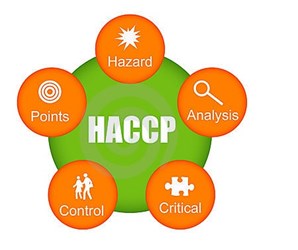HACCP — The Elephant In The Room (Part Two of Three)
By Laurel Maloy, contributing writer, Food Online

In part one of the series, the first two principals of HACCP — Conduct a Hazard Analysis and Identify Critical Control Points — were covered. Here in part two, another two principles of HACCP will be discussed
The first two steps to establishing a viable and efficient Hazard Analysis and Critical Control Point program involve “walking the line” to analyze your facility’s entire food processing system and then identifying those areas where contamination has the potential to occur. With that done, now is the time to sit down and take a serious look at the regulations and guidance, and to set the Critical Limit (CL) for each Critical Control Point (CPP) that has been identified. The next two elements — Establish Critical Limits For Each Critical Control Point and Establish Critical Control Point Monitoring Requirements — are best accomplished at the same time.
A team may be appointed to do this, but the results may be more favorable if you ask for volunteers. Preface the assignment with the fact that it will involve becoming familiar with not only FDA regulations and guidance, but with the function of all of the facility’s equipment, its maintenance requirements, its expected life, and how it relates to food safety. Stress that this is not a “cushy” assignment, but one that can impact the life of the plant and the future of each and every co-worker.
Larger operations may already have a food safety team in place; however, smaller facilities may be looking for a more economical means by which to accomplish this task. Utilizing volunteers and cross-training them to become food safety experts is likely to ensure the people taking on this undertaking have an interest and passion for doing it right. It is also a great way to have your food safety gurus monitoring the processes during daily operations. Consider the fact that their peers will be more likely to express concerns or suggest changes with someone they are more closely associated with, rather than someone in management. Don’t take it personally; just accept it for what it is and capitalize upon it.
Establishing the CL for each CPP means determining what is the minimum and/or maximum value for any biological, chemical, or physical component for potential contamination. Then it is taken one step further by identifying how that CL can be controlled in order to eliminate, reduce, or to prevent a food-safety hazard from occurring. The CL will be a measurement of some kind, such as time, temperature, weight, or a percentage that is based upon regulatory requirements, scientific research, or industry standards. The final factor will be a Control Measure (CM), which is the resulting action in the event a CL is exceeded. One source for impartial, scientific criteria utilized by federal agencies is the National Advisory Committee on Microbiological Criteria for Foods (NACMCF). Current Good Manufacturing Practices (CGMPs), will help to make the CL at each CPP attainable. Microbiological criterion should be applied to a biologic CL where practical and if there is epidemiological evidence of the potential for a public health risk. Here are a couple of examples of CPPs and the CL associated with it:
Ground Beef:
- CPP — Metal Detector
- CL — the size or number of metal fragments detectable by the metal detection system, in accordance with regulation, scientific research, and/or industry standards
- CM — Automatic rejection of product exceeding the CLs set
Fresh Produce:
- CPP — Sanitizing spray unit(s)
- CL — Pathogens (identify every pathogen possible and set the CL for each)
- CM — Proper concentration and contact time under the appropriate conditions to ensure the CL is met
Each CPP, CL, and CM should be documented in the way that works best within your operation. Some will depend upon spread sheets or forms, while others will look to newly developed software programs. New technology is web-based, some programs enabling users to create a HACCP plan for their facility and to integrate a comprehensive food safety management system. A combination of methods may be needed in order to adopt the best HACCP program for your particular food processing facility. Each plant will want to assess the cost vs. man-hours vs. risk in order to determine the most economically sound and efficient method for HACCP management.
Concurrently, as you identify each CCP, the associated CL and the appropriate CM — analyze the best methods by which to monitor each CPP to ensure the CL is within set margins.
A CPP monitoring plan should answer, at a minimum, the following questions:
- What — be specific. Annotate the temperature, the time period, or the percentage of pathogenic allowance, for example
- How — spell out the process, equipment, or method for measuring the CL of the CPP
- Who — specify who is to take responsibility for each particular CPP and designate an alternate, or two, in the event the primary or secondary responsible party is not available. Establish a method of communication in order to assure the proper monitoring is taking place
- How Often — determine how often it is necessary to monitor the particular CPP and stick to the schedule
All of the above will become an integral part of recordkeeping procedures, which will be presented in Part Three of HACCP—The Elephant In The Room.
All food processors should be celebrating the inroads and enormous strides made in the food supply chain in regard to food safety. We are on the right track. The momentum is gaining speed, and it seems that the governmental regulators, the consumers, and the food processors may all actually be on the same page of the same document at the same time.
